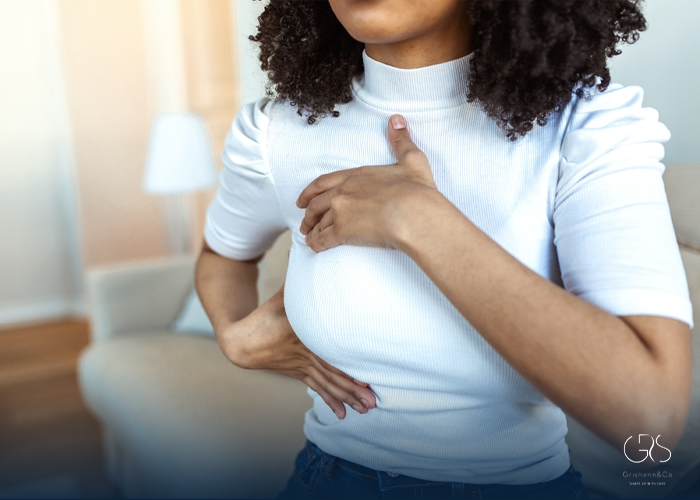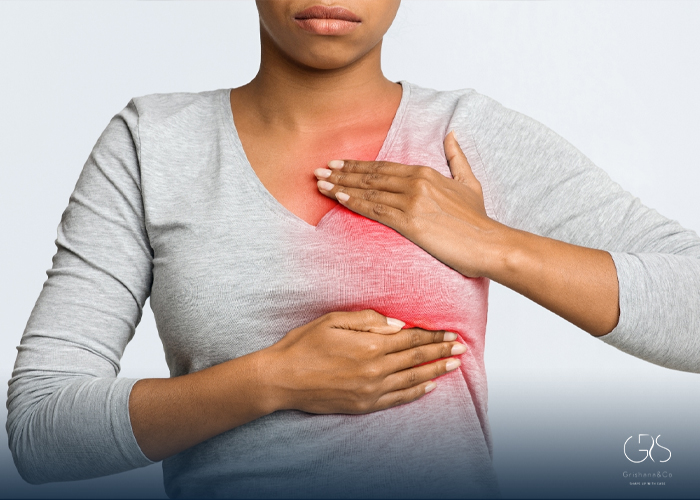Finding a lump in your breast can be an unnerving experience, leading to feelings of anxiety and fear. It’s crucial to understand that not all breast lumps are cancerous, but it’s essential to take such findings seriously and seek medical attention promptly. In this comprehensive guide, we’ll explore what steps to take if you find a lump in your breast, relevant statistics, and diverse perspectives on the topic.
Step 1: Don’t Panic, but Do Take Action
It’s entirely normal to feel worried upon discovering a lump in your breast. However, it’s vital to keep in mind that not all breast lumps are cancerous. According to Breastcancer.org, only 20% of breast lumps turn out to be cancerous. However, it’s crucial to address any concerns by seeking medical attention as soon as possible. Remember that early detection is key to successful treatment.

Step 2: Consult a Healthcare Professional
Schedule an appointment with your healthcare provider, who can perform a comprehensive breast exam and may recommend further tests such as mammograms, ultrasounds, or biopsies to determine the nature of the lump. Don’t delay seeking medical attention, regardless of your age or family history.
Step 3: Have the Lump Examined
Your healthcare provider will conduct a physical exam to evaluate the size, shape, and texture of the lump. They may ask questions about your medical history, any symptoms you may be experiencing, and conduct additional tests to determine the underlying cause.

Step 4: What Tests Are Used?
Various tests may be used to evaluate breast lumps, including mammograms, ultrasounds, and MRIs. These imaging tests can help determine whether the lump is solid or fluid-filled, aiding in making an accurate diagnosis.
Step 5: Testing for Individuals Under 30
While breast cancer is less common in younger individuals, it’s crucial to take any breast lump seriously. For individuals under 30, imaging tests such as ultrasounds may be preferred over mammograms due to the density of breast tissue in younger women.
Step 6: Testing for Individuals Over 30
For individuals over 30, mammograms are typically recommended as part of routine breast cancer screening. These X-ray images of the breast can help detect abnormalities, including suspicious lumps or masses, in older individuals.
Step 7: When a Biopsy May Be Necessary
If the imaging tests raise concerns or don’t provide a clear diagnosis, a biopsy may be recommended. During a biopsy, a small sample of tissue is removed and examined under a microscope to determine if cancer cells are present.
Step 8: How To Go About Getting Testing Done
Your healthcare provider will guide you through the process of scheduling and completing any necessary tests. They will provide information on what to expect during the tests and how to prepare for them.
Step 9: What Results Might You Receive?
After completing the tests, you may receive various results, including benign findings such as cysts or fibroadenomas, or the possibility of a cancer diagnosis. It’s important to follow up with your healthcare provider to discuss the results and any recommended next steps.
Relevant Statistics:
According to the American Cancer Society, about 1 in 8 women in the United States will develop invasive breast cancer over the course of her lifetime. It’s important to note that breast cancer can also affect men, although it is less common, with about 2,650 men being diagnosed each year. The overall five-year survival rate for breast cancer is approximately 90% when detected at an early stage.
Conclusion:
Finding a lump in your breast can be a daunting experience, but it’s essential to take prompt and decisive action. By seeking medical attention and understanding the potential outcomes, individuals can ensure early detection and appropriate treatment. It’s also important to consider diverse perspectives and acknowledge the emotional and social impact of such findings.
Sources
- American Cancer Society, Key Statistics for Breast Cancer
- Breastcancer.org, Breast Self-Exam







